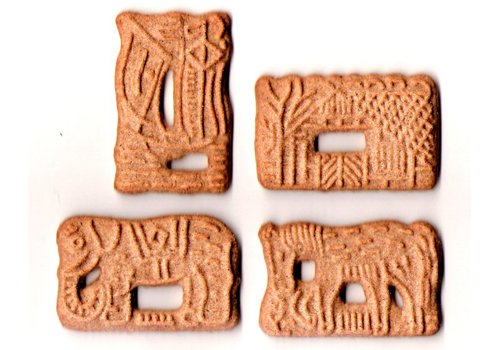Reading time: Less than 1 minute
Increase your vocabulary and you’ll make your writing much more precise. That’s why I provide a word of the week. Today’s word: speculaas…
I picked up the new novel Akin by Emma Donoghue with eager anticipation. I’d enjoyed her earlier book Room (although I hadn’t seen the movie) and I’d appreciated her later novel The Wonder even more.
When a good friend told me how much he’d enjoyed Akin, I was 100% sold. Sadly, it didn’t live up to my own expectations. I didn’t find the story engaging enough for my taste.
Still, the book gave me my word of the week, speculaas. Here is how Donoghue used it:
His café crème arrived, with a tiny rectangular speculaas.
I briefly wondered if this was some sort of European implement for stirring coffee but then it occurred to me it might be a cookie. Bingo!
Speculaas or speculoos is a type of spiced shortcrust cookie, traditionally baked around Christmas in Germany and Austria and for St Nicholas’ day in the Netherlands (Dec. 5) and in Belgium and Luxembourg (Dec. 6)
Speculaas are thin, very crunchy, caramelized, slightly browned and, have some image or figure (often from the traditional stories about St. Nicholas) stamped on the front side before baking. See image at the top of this post.
I’ve eaten these cookies myself and enjoyed their light spiciness, which often includes cinnamon, nutmeg, cloves, ginger, cardamom and white pepper. These were common spices in the 1600–1700s as a result of the Dutch East Indies spice trade.
There are a number of theories behind the origin of the name of the cookie. It may come from the Latin speculum, which means mirror and could refer to the images being cut as a mirrored bas-relief into a wooden stamp.
Another less likely theory is that the word comes from the Latin speculator which, among other meanings, could refer to a bishop or St Nicholas’ epithet, “he who sees everything.” Still another possible source is specerij, the Dutch word for spice.


